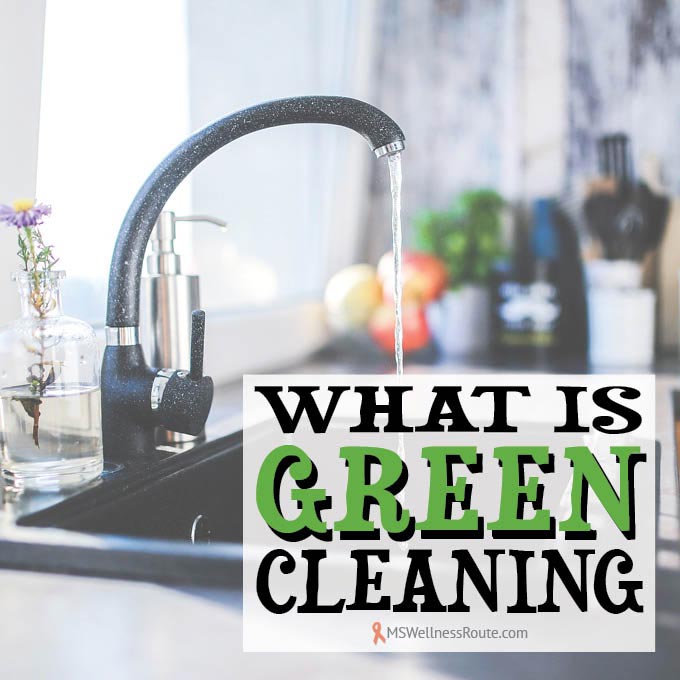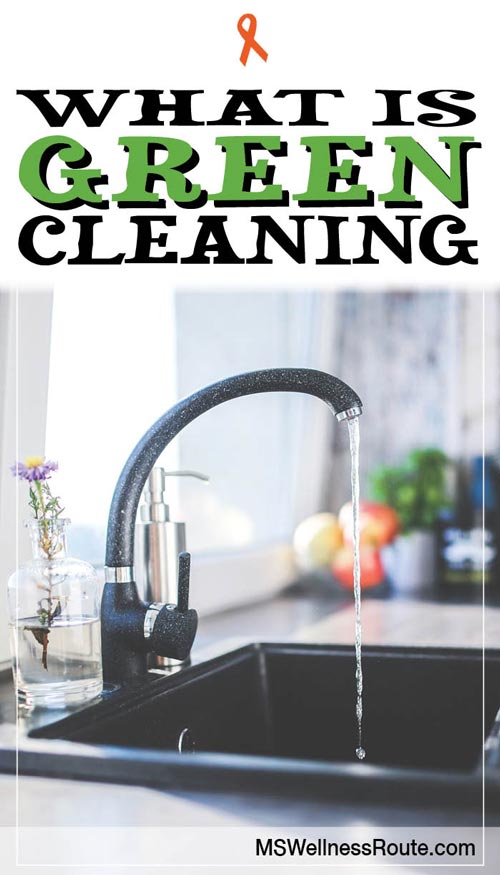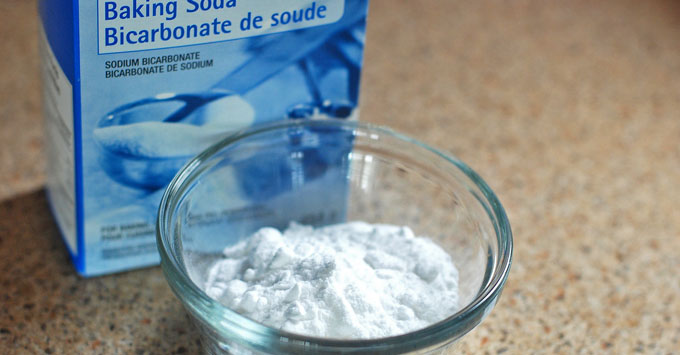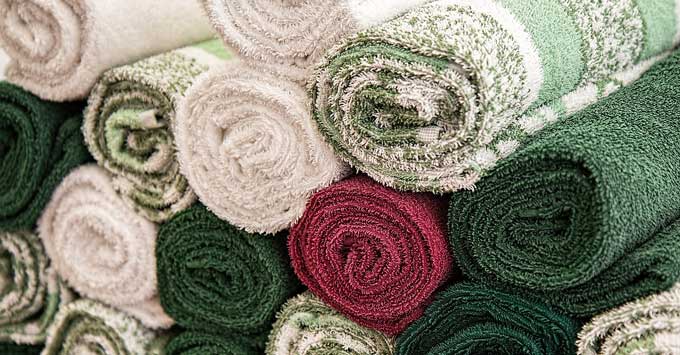Last Updated on January 30, 2025 by Cathy

It’s hard to say home sweet home when you’re cleaning your home with toxic chemicals. Instead, use green cleaning. It keeps out harmful toxins that contribute to indoor air pollution. Toxic cleaners are on our countertops, floors, clothes, dishes, and in the air. These products may be convenient but they are very harmful to the environment. Including everyone in your house including your pets.
Your Health
Conventional household cleaners are very toxic. They’re absorbed through your skin and lungs. They cause neurotoxins (damage nerve cells), endocrine disrupters (hormones), and carcinogens (cancer).
Danger! Warning! Caution! These warnings on the labels should be enough to scare you off. I remember when I was using conventional cleaners the fumes were so bad. I’d be covering my nose and mouth with one hand while trying to clean with the other hand.
I even hate walking down the cleaning supplies aisle at the grocery store. I can feel my nose start to tingle from the noxious fumes. The fumes alone can cause respiratory irritation, headaches, or sneezing.
Chlorine bleach and ammonia are two highly toxic cleaners. If you’re cleaning with both, the fumes together create an added threat. These threats can create lung-damaging gases. We shouldn’t be poisoned while cleaning our homes.
The Environment
Conventional cleaners wash down our drains making their way to wastewater treatment plants. Some don’t break down continuing their way into our rivers, lakes, and streams. Also harming fish and wildlife.
If you’re on a septic system the cleaners can wreak havoc on your tank. Disrupting the bacteria levels and entering the surrounding soil. Eventually leading to costly repairs.
If the cleaners aren’t disposed of properly, they can drain leaking poisons into our soil. Most plastic bottles are not recycled, filling up our landfills.
What is green cleaning?
Green cleaning avoids harsh chemicals that are harmful to your health and the environment. Avoiding ingredients that harm humans, wildlife, and the ecosystem.
There are many green cleaning products on the market. But, you can’t always trust their claims on the labels. Companies use terms, such as “natural” on a product that contains chemicals. Misleading consumers to sell their products.
Saves Money
Conventional cleaning supplies are expensive. When making your own green products you’re using items you probably already have.
Baking soda and vinegar cost pennies compared to expensive toxic cleaners. Making your own can save you hundreds of dollars each year.
Green Cleaning Tips
Today, there are more “natural” cleaning products than ever before. Unfortunately, a recent study discovered some of these products still include harmful chemicals. Making your own cleaners will be the only true way of using non-toxic cleaners.
You can clean your entire house using distilled white vinegar and baking soda. You can also use lemon juice, hydrogen peroxide, and castile soap (I like Dr. Bronner’s). I also like to use different essential oils, microfiber cloths, and a refillable steam mop.
Vinegar and baking soda will clean almost everything in your home. Add some essential oils for different scents. Mix a little warm water with either and that’s it.
All-Purpose Cleaner:
1 cup vinegar
1 cup of water
4 drops tea tree essential oil
8-10 drops lemon essential oil (for scent)
Combine all ingredients in a spray bottle and shake well.
Vinegar
A gallon jug is inexpensive and it’s great for disinfecting. Vinegar makes a good all-purpose cleaner for anywhere in your home.
Baking Soda
It’s for more than cooking and cost pennies. Baking soda works great as a deodorizer, sprinkle it on your carpets. Let it sit for a little while then vacuum it up. Use it as a scrubbing cleanser. You can even use it for personal care items like toothpaste, tooth whitener, or deodorant. Use it anywhere you please.
Goo-Gone:
1 part olive oil
2 parts baking soda
Mix, using a towel rub over the sticky area until gone.
Kitchen and Bathrooms
These rooms usually take more scouring so I like to use baking soda or Borax dampen with water. It does a great job on sinks, tubs, ovens, stainless steel, and coffee pots. Spray mirrors with vinegar and wipe with microfiber cloths.
Wipe full-strength vinegar or lemons on cutting boards. Lemon juice and baking soda for the garbage disposal. Lemon and water for the microwave. For the toilet use baking soda and vinegar, you can even add essential oils to freshen up the smell.
Laundry Room
You can find many recipes online for liquid or dry laundry detergents. This is where I splurge and buy it, I like to use Molly’s Suds. For fabric softeners use white vinegar and essential oils. You can also use wool dryer balls instead of dryer sheets. Unfortunately, I found my clothes come out with too much static when using the dryer balls.
Whites:
1/2 cup hydrogen peroxide
1/2 cup baking soda
1 cup water
Mix in a jar and pour over stains (a spray bottle clogs).
Dryer Sheets:
Grab some fabric or old dishtowels.
Add 1/2 cup vinegar plus 8-10 drops of your favorite essential oils. Lavender is great for bedding since it helps you sleep.
Fold and place the fabric in the glass jar.
Close tight, shake, and you’re done! Add one to each load.
Switching To Green
I make my own green cleaning products, but there are some I buy for convenience like laundry soap. Check out the Environmental Working Group website for a list of top green cleaning products.
Green cleaning products are convenient but they’re also expensive. Using simple ingredients you make yourself is not only easy, it’ll save you lots of money. You don’t have to switch all at once. Yet, your ultimate goal should be to remove as many as possible.
Click the image below to pin:








